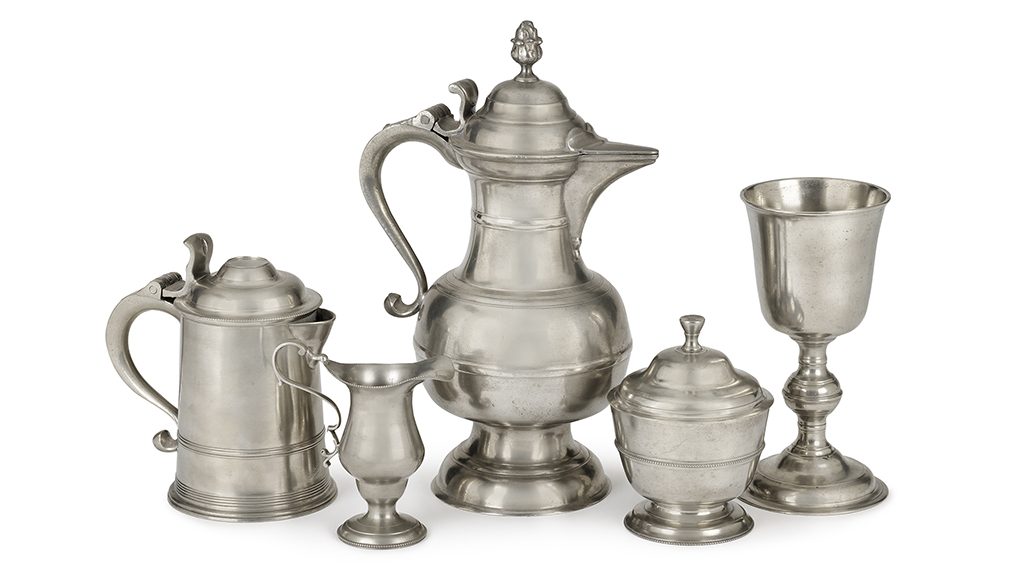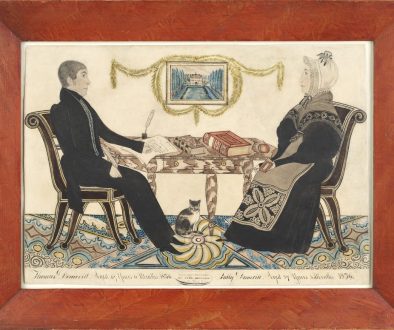The Timeless Beauty of Antique Pewter: A Glimpse into History and Craftsmanship
The Timeless Beauty of Antique Pewter: A Glimpse into History and Craftsmanship
Pewter, a soft metal alloy consisting primarily of tin mixed with other metals like copper, antimony, and bismuth, has been prized for centuries due to its malleability, durability, and stunning appearance. Antique pewter, in particular, offers a fascinating window into the past—its design, craftsmanship, and use reflecting the culture and technology of the time. In this blog, we’ll explore the history, characteristics, and appeal of antique pewter, and why it continues to captivate collectors and historians alike.
A Brief History of Pewter
The use of pewter dates back to the ancient civilizations of Egypt, Rome, and Greece, where it was used for everything from simple tools to ornate vessels. However, it was during the Middle Ages in Europe that pewter became especially prominent. By the 12th century, it was commonly used in household items like drinking vessels, plates, and candlesticks, especially among the nobility and wealthy merchants.
One of the main reasons for pewter’s widespread use during these periods was its accessibility. Unlike precious metals like silver or gold, pewter was relatively affordable yet still had a lustrous, metallic appearance that appealed to those wanting to emulate wealth and status. As technology advanced, so did pewter craftsmanship. By the 17th and 18th centuries, artisans began creating more intricate and decorative pieces, which continue to be highly prized by collectors today.
Characteristics of Antique Pewter
To the untrained eye, antique pewter might seem like an ordinary metal, but closer inspection reveals the unique qualities that set it apart.
- Color and Finish: Antique pewter has a soft, silvery-gray hue that develops a patina over time. The sheen of older pewter can vary, with some pieces maintaining a polished luster while others have a more matte or aged appearance due to years of use and exposure to the elements. The patina is one of the key features that collectors often seek, as it adds character and authenticity.
- Weight: Pewter is a dense metal, heavier than aluminum or some modern alloys, but lighter than silver. Antique pewter objects often feel solid in the hand, which is part of their charm. However, the weight can also be an indicator of authenticity—modern reproductions might use lighter, less durable alloys that don’t carry the same heft.
- Craftsmanship: One of the most defining aspects of antique pewter is the level of craftsmanship. Many pieces were made by hand, with artisans carefully casting, shaping, and sometimes engraving intricate designs. The seams, markings, and tool marks on antique pewter pieces are often a hallmark of their hand-crafted origins.
- Patina and Tarnish: Over time, pewter naturally develops a patina that enhances its aesthetic appeal. While some collectors prefer to leave this tarnish intact to preserve the “age” of the item, others may choose to clean it to restore the piece’s original appearance. It’s important to note that antique pewter should be cleaned with care to avoid damaging its surface.
Common Antique Pewter Pieces
Antique pewter was used to create a wide range of household items, many of which are still highly collectible today. Some of the most sought-after pieces include:
- Tankards and Mugs: Pewter tankards were commonly used in taverns and homes during the 17th and 18th centuries. These drinking vessels often feature beautifully crafted lids, handles, and engraved designs. Early tankards might be adorned with coats of arms, names, or intricate floral patterns.
- Plates and Bowls: Pewter plates and bowls were popular for everyday use in homes before the widespread availability of porcelain and other more affordable dinnerware. These items were often hand-hammered or cast and could feature decorative borders or be embossed with symbols or patterns.
- Candelabras and Candlesticks: Pewter was a popular material for candlesticks and candelabras, as it could withstand the heat of candle flames and was easy to mold into ornate designs. Antique pewter candlesticks are often found in a range of styles, from simple, utilitarian forms to elaborate, multi-armed designs that reflect the sophistication of the period.
- Inkwells and Writing Accessories: During the 17th and 18th centuries, pewter inkwells, pens, and desk accessories were used by scholars, writers, and professionals. These items often featured engraved patterns or the initials of their owners, making them fascinating historical artifacts.
- Figurines and Decorative Objects: While pewter was largely functional, it was also used for decorative pieces like figurines, jewelry boxes, and small sculptures. These items could be finely detailed and often reflected the artistic trends of the time.
The Appeal of Antique Pewter Today
The allure of antique pewter lies not just in its historical significance, but also in its enduring beauty and craftsmanship. As more modern materials have emerged, pewter has fallen out of everyday use, making vintage pieces increasingly rare and desirable. Whether it’s the gleam of a pewter tankard, the delicacy of a hand-engraved plate, or the rustic charm of a candleholder, antique pewter brings a sense of timeless elegance to any collection.
For collectors, antique pewter offers a fascinating glimpse into the daily life of past centuries. Each piece tells a story—whether it’s the craftsmanship of a 17th-century pewterer or the history of a family who used it for generations. The joy of collecting antique pewter isn’t just about acquiring an object; it’s about preserving a piece of history.
Care and Preservation
To ensure that your antique pewter pieces continue to shine for years to come, it’s important to care for them properly. While pewter is durable, it can still tarnish and lose its luster over time if not maintained. Here are some tips for preserving antique pewter:
- Avoid harsh cleaners: Never use abrasive cleaners or harsh chemicals on antique pewter, as these can scratch or discolor the surface.
- Gentle cleaning: If tarnish builds up, use a soft cloth and a non-abrasive cleaner designed for pewter. Mild soap and warm water can also be effective for light cleaning.
- Store carefully: Keep pewter items away from excessive moisture or heat, as these can damage the metal over time.
- Consider professional restoration: If your pewter piece has significant tarnish or damage, it may be worth seeking a professional conservator who specializes in metal restoration.
Conclusion
Antique pewter is more than just a metal; it is a testament to the skill of past artisans and the tastes of bygone eras. From the intricate designs of tankards to the simple elegance of candlesticks, antique pewter continues to captivate collectors with its beauty and history. Whether you’re a seasoned collector or a novice with a budding interest, antique pewter offers a timeless way to connect with the past and add a touch of elegance to your home. Its lasting appeal lies in both its craftsmanship and its ability to bridge the gap between history and the present, making it a cherished part of any collection.
Please be sure to join us in January 2025 for Part II of the Pewter Collection of Dr. Melvyn & Bette Wolf.




